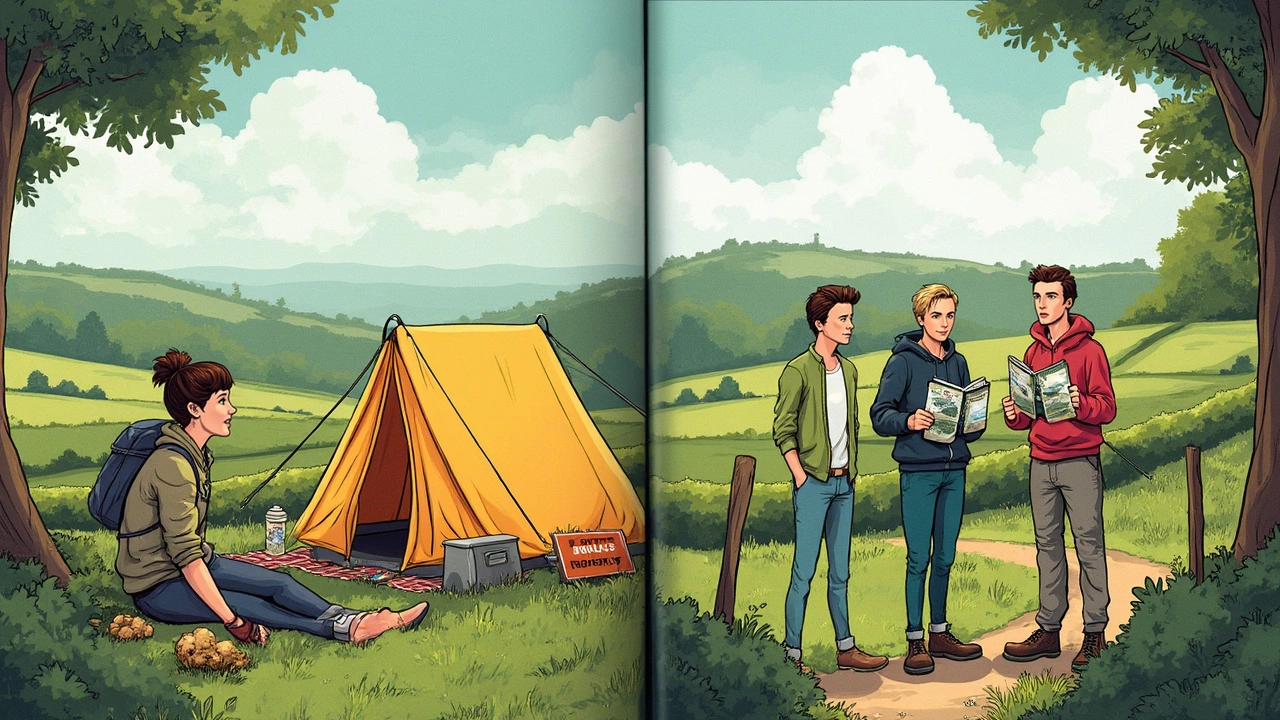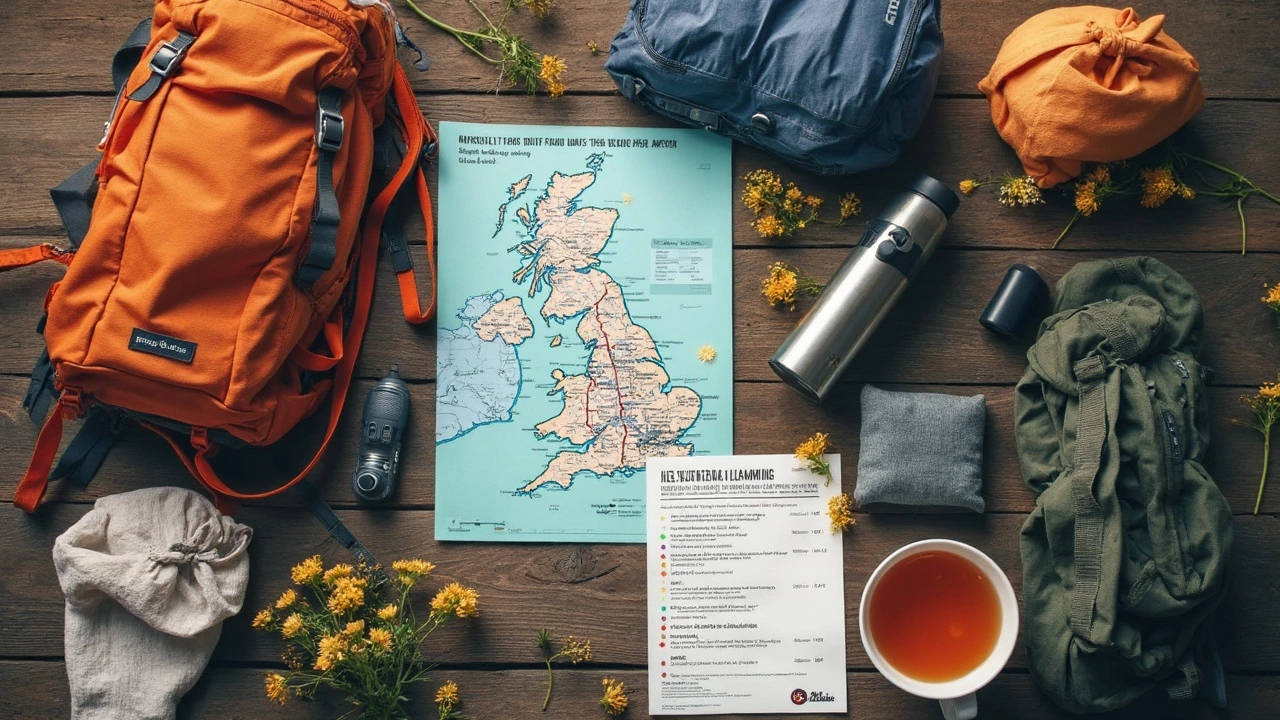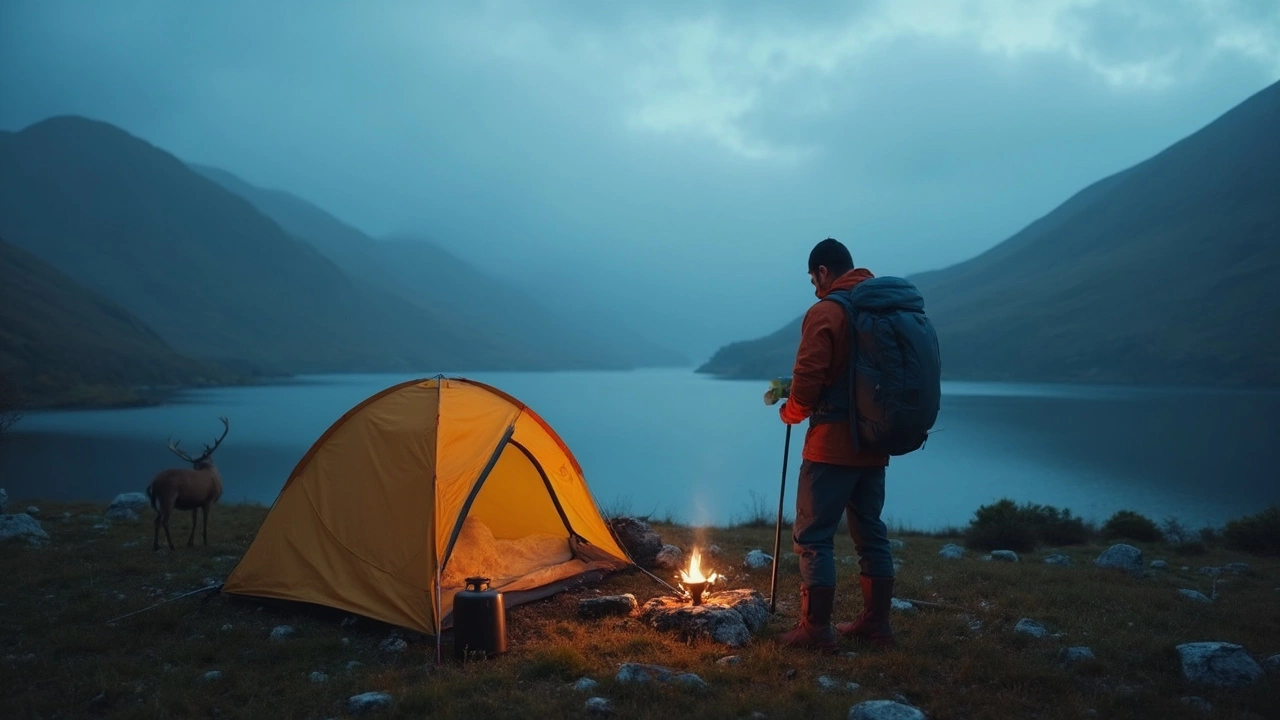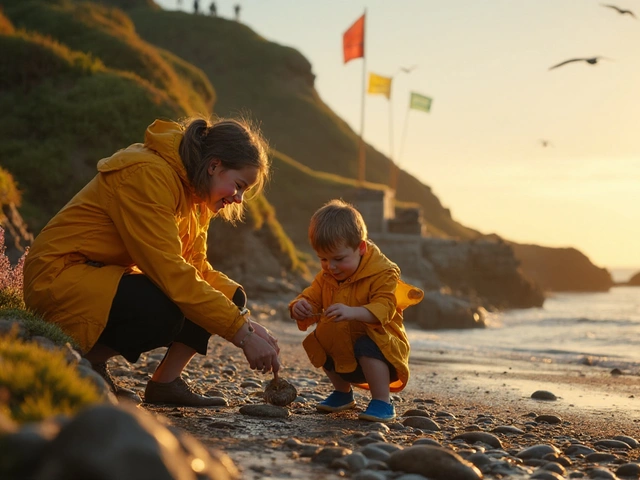You can’t just throw up a tent anywhere in the UK and call it a night—unless you’re ready for a knock on your canvas from someone who isn’t thrilled to see you. Here’s the thing: wild camping laws in the UK are confusing if you’re coming from countries used to a ‘freedom to roam’ deal. Scotland is more laid-back about it, while England and Wales put up more roadblocks.
Spotting somewhere legal to wild camp in the UK can feel like a treasure hunt. Get it right and you’ll wake up to stunning views; get it wrong and you could face fines, angry farmers, or worse. The weird part? There are loopholes and workarounds—plus some places where wild camping is welcome, even outside Scotland, if you know how to approach it.
Forget the usual Instagram spots and check the real rules before you head out. This isn’t about dodging the law, it’s about enjoying the wild without hassles. Ready for a simple breakdown? Let’s figure out where you can pitch up, stress-free.
- Wild Camping Laws Across the UK
- Top Spots for Legal Wild Camping
- Wild Camping Etiquette & Unwritten Rules
- Risks, Fines, and How to Avoid Trouble
- Quick Tips for Stress-Free Wild Camping
Wild Camping Laws Across the UK
Rules for wild camping UK change in a big way depending on whether you’re north or south of the Scottish border. Scotland is the easiest place to camp wild legally, but if you try the same move in England, Wales, or Northern Ireland, you’re stepping on much trickier ground.
In Scotland, the Land Reform (Scotland) Act 2003 pretty much opens up most unenclosed land for wild camping, as long as you camp responsibly. That means pitching your tent away from houses or farmland and keeping it low-key.
As VisitScotland puts it, “Responsible access means respecting the interests of other people, caring for the environment, and taking responsibility for your own actions.”
England and Wales are more locked down. In almost all cases, wild camping without the landowner’s permission is considered trespassing. There are a couple of exceptions, like certain zones on Dartmoor—more on that later—but you usually need to get the landowner’s okay first. The police don’t typically get involved unless things get messy, but landowners can ask you to leave, and theoretically, you could face civil action if you refuse to move.
- Scotland: Legal on most unenclosed land, but do it respectfully.
- England & Wales: Illegal without permission except for certain areas (Dartmoor’s commons had a court battle recently—now it’s allowed on specific mapped spots).
- Northern Ireland: Same as England and Wales—permission needed everywhere.
| Country | Legal Status | Do You Need Permission? |
|---|---|---|
| Scotland | Legal (with rules) | No |
| England | Mostly illegal | Yes |
| Wales | Mostly illegal | Yes |
| Northern Ireland | Illegal | Yes |
Quick tip: If you’re in England or Wales, try asking farmers or landowners politely. A lot of them are open to wild camping if you treat their land with respect and clean up after yourself. Some areas even run low-key wild camping schemes—worth Googling for your destination.
If you want hassle-free wild camping in the UK, Scotland’s still king. The key is always respect: keep it low-profile, don’t leave a mess, and move on if you’re asked. It’s all about striking a balance between adventure and responsibility.
Top Spots for Legal Wild Camping
If you’re planning on wild camping UK style, the first place to check out is Scotland. Thanks to the Land Reform (Scotland) Act 2003, you can pop up a tent on most unenclosed land as long as you respect the countryside and keep your spot tidy. The Scottish Highlands, Cairngorms National Park, and Loch Lomond & the Trossachs all offer endless chances for stress-free camping with unbeatable views. Heads-up though: Loch Lomond & the Trossachs has byelaws between March and September, so check if a permit is needed.
In England and Wales, it’s a different story—wild camping is usually illegal without the landowner's okay. But there are a few well-trodden exceptions:
- Dartmoor National Park: The only national park in England where wild camping has been permitted, at least in theory. In 2023, there was some drama with court decisions back and forth, but as of early 2025, you can wild camp in designated areas—just stick to the “backpack camping” map on the Dartmoor website and avoid doing it near roads, farms, or villages.
- Lake District: No official allowance, but campers have been tolerated for decades, especially at high altitudes away from towns and trails. Be subtle, camp late, leave early, and you’re probably fine. But if a landowner asks you to leave, you’ve got to pack up without fuss.
- Snowdonia (Eryri) National Park: Similar hush-hush policy as the Lakes. Wild camping isn’t technically allowed, but in reality, discreet campers far from villages and roads usually get away with it. Again: respect, tidy, low-profile.
- Brecon Beacons (Bannau Brycheiniog): Wild camping is not legal here without permission, but some farmers and landowners are open to a polite request. If you don’t ask, be as discreet as possible—late arrivals, early departures, no mess.
Here’s a quick look at where you can and can’t set up your tent:
| Area | Legal Status | Permits Needed? |
|---|---|---|
| Scottish Highlands & Most Scotland National Parks | Legal (except Loch Lomond Mar–Sept) | No (except Loch Lomond permit zones) |
| Dartmoor National Park | Legal in designated areas | Check map, no permit needed |
| Lake District | Unofficially tolerated | No, but be discreet |
| Snowdonia / Eryri | Not officially allowed, often overlooked | No, keep a low profile |
| Brecon Beacons | Illegal without permission | Ask first |
Heads-up: there’s no such thing as wild camping in London or big cities. And don’t try it in nature reserves, military areas, or near private houses—those spots are a sure ticket to trouble.
Bottom line: with wild camping rules all over the place, it’s worth planning and checking maps before you go. In Scotland, you’re spoiled for choice, but further south, you’ll need to tread carefully—or at least know who to ask, and when to disappear quietly.

Wild Camping Etiquette & Unwritten Rules
You might find a remote spot and think nobody will notice, but if you ignore the unwritten rules, you’ll ruin it for everyone. Even in the few places where wild camping UK is tolerated, your actions matter. Locals and landowners talk, and bad stories travel fast.
First rule: leave no trace. That means packing out all your rubbish, dealing with your toilet business discreetly (either dig a small hole well away from water or use a bag), and not messing with the landscape. Burnt patches or trashed sites draw the wrong kind of attention.
- Use a small tent in neutral colours. Bright orange domes catch every farmer’s eye from a mile away.
- Arrive late and leave early—sunset to sunrise is a good rule. People are less likely to care if you’re gone before the dog walkers appear.
- Keep group size small. Wild camping isn’t a festival. Big groups feel like an invasion.
- Light fires only if it’s absolutely safe and legal—most places in England and Wales say 'no campfires.' If you really need heat, use a camping stove instead.
- Stay quiet and out of sight. That means picking tucked-away spots, not field edges or riverbanks popular with locals.
Good etiquette also means respecting livestock, fences, and crops—literally don’t hop fences or camp in fields with animals or growing things. If a farmer or landowner asks you to move, just move. Don’t argue. Sometimes, a quick, friendly chat and showing respect keeps things chill.
Stats from the National Trust revealed that poorly handled wild camping incidents in Dartmoor spiked during the 2020 lockdown, causing stricter patrols and temporary bans. Landowners are watching now more than ever.
Follow these unwritten rules and you’ll blend in like a local, keep your freedom, and avoid adding to the list of reasons wild camping gets banned in new places.
Risks, Fines, and How to Avoid Trouble
Wild camping in the UK can get dicey if you don’t know the rules. Outside Scotland, wild camping on private land without permission is usually classed as trespassing. In England and Wales, especially, most land is privately owned—and landowners have the right to ask you to move on. If you refuse, things could escalate: authorities can issue on-the-spot fines, and in some places, like Dartmoor National Park, byelaws have been brought in to clamp down on campers after problems with overcrowding and litter.
Some campers get caught out by local rules they didn’t even know existed. Take Dartmoor: up until early 2023, you could wild camp there by tradition. Now, you’re only allowed to pitch up in set zones and for only two nights—go outside those spots and you could be fined or asked to pack up. In the Lake District and Snowdonia, wild camping isn’t technically allowed anywhere without landowner permission, but authorities usually just ask you to move on if you’re discreet and leave no mess. Still, repeat or obvious offenders might cop a fine.
- Spot Checks: Some national parks have rangers or police patrols, especially in the summer. They can and do check permits or ask campers to leave.
- Fines: Typical fines range from £50 to £100 if you ignore warnings, but this varies. For severe issues like damaging property or starting fires, it could be much higher.
- Other Risks: Leaving no trace isn’t just about being tidy. Litter or campfire damage sees the harshest penalties. Littering itself can earn you a £150 fixed penalty notice in some UK national parks.
| Area | Wild camping allowed? | Typical response if caught |
|---|---|---|
| Scotland (except byelaw areas like Loch Lomond) | Yes, under Scottish Outdoor Access Code | Generally fine if guidelines followed |
| Dartmoor (designated zones) | Yes, but only in marked areas | Possible fine if camping outside zones |
| Lake District & Snowdonia | No, unless with permission | Usually asked to leave (fine for repeat offences) |
So how do you steer clear of trouble? Stick to these tips:
- Always research where you can and can't pitch up. Official park websites update their rules and maps every season.
- Ask for landowner permission if possible, especially in England and Wales. A friendly approach works wonders.
- Arrive late, leave early, and camp out of sight of roads and trails.
- Always follow the wild camping UK ‘leave no trace’ mantra. No fires unless specifically allowed, pack out rubbish, and keep groups small.
- If someone official asks you to move on, just do it—arguing makes life harder for everyone who loves the outdoors.
Bottom line: be smart, be respectful, and know the local rules. Wild camping can be amazing, but only if you do it right.

Quick Tips for Stress-Free Wild Camping
If you want to make the most of wild camping UK without hassle, it pays to know the unwritten survival rules. These aren’t just about avoiding trouble—they seriously boost your chances of a quiet night and a guilt-free Instagram story.
- Arrive Late, Leave Early: The less time you’re seen, the less chance you’ll upset landowners or get asked to pack up. Aim to set up near sunset and hit the road after sunrise.
- Stay Out of Sight: Skip fields with livestock or crops. Instead, tuck yourself away from main paths and homes. Hilltops, woods, and down by rivers are usually best—just make sure you’re not trespassing on obvious private spots.
- Pack It In, Pack It Out: Every wrapper, every tissue—take it home. The UK’s wild spots are under pressure, and landowners get cranky if they find rubbish or fire scars.
- No Fires, Low Impact: Open fires are a red flag, especially in the Lake District or Dartmoor. A simple camping stove is safer and keeps you off landowners’ radar.
- Be Discreet: Keep noise down, use dull-coloured gear, and ditch the fairy lights. Blending in means fewer questions from curious passers-by (or police).
- Single Night Stays: Don’t get comfortable—not in one place, at least. One night and move on keeps things cool with both the law and locals.
- Permission Is Golden: If you’re unsure, ask. Some National Parks (like certain bits of Dartmoor) say yes to wild camping, but it changes all the time. A quick call is better than an awkward encounter in the dark.
Want hard numbers? The 2023 Outdoor Recreation Survey showed that nearly 65% of wild campers in the UK picked up litter left by others, but only 20% got landowner permission. That gap explains why new rules pop up all the time—it’s easy to lose access if people abuse the land.
| Quick Tip | Helps You... |
|---|---|
| Arrive Late, Leave Early | Avoid drawing attention |
| Pack It In, Pack It Out | Keep spots open for everyone |
| No Fires | Prevent bans and wildfires |
| Get Permission | Dodge fines and evictions |
Follow these wild camping rules, and you’ll find yourself more relaxed, less stressed, and way more likely to keep adventuring in the UK’s wild spaces.






